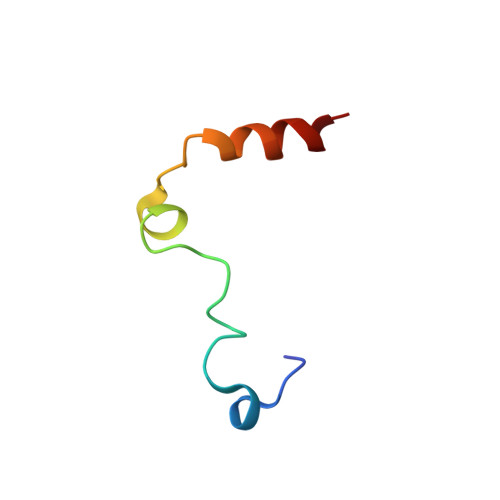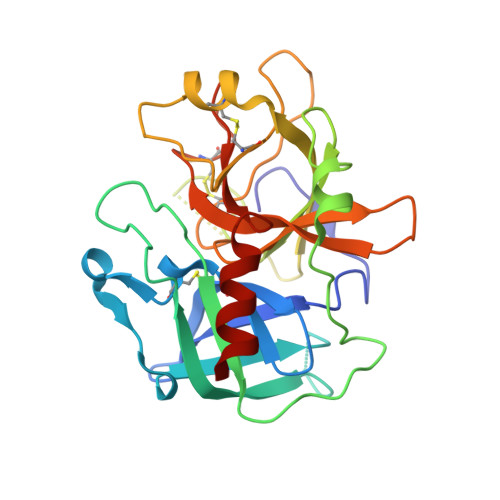Energetic and structural consequences of perturbing Gly-193 in the oxyanion hole of serine proteases
Bobofchak, K.M., Pineda, A.O., Mathews, F.S., Di Cera, E.(2005) J Biological Chem 280: 25644-25650
- PubMed: 15890651
- DOI: https://doi.org/10.1074/jbc.M503499200
- Primary Citation of Related Structures:
1Z8I, 1Z8J - PubMed Abstract:
The oxyanion hole of serine proteases is formed by the backbone N atoms of the catalytic Ser-195 and Gly-193 and engages the backbone O atom of the P1 residue of substrate in an important H-bonding interaction. The energetic contribution of this interaction in the ground and transition states is presently unknown. Measurements of the individual rate constants defining the catalytic mechanism of substrate hydrolysis for wild-type thrombin and trypsin and their G193A and G193P mutants reveal that Gly-193 is required for optimal substrate binding and acylation. Crystal structures of the G193A and G193P mutants of thrombin bound to the active site inhibitor H-d-Phe-Pro-Arg-CH2Cl document the extent of perturbation induced by the replacement of Gly-193. The Ala mutant weakens the H-bonding interaction of the N atom of residue 193, whereas the Pro substitution abrogates it altogether with additional small shifts of the protein backbone. From the kinetic and structural data, we estimate that the H-bonding interaction in the oxyanion hole contributes a stabilization of the ground and transition states of > 1.5 kcal/mol but < 3.0 kcal/mol. These results shed light on a basic aspect of the enzyme-substrate interaction in the entire family of trypsin-like serine proteases.
- Department of Biochemistry and Molecular Biophysics, Washington University School of Medicine, St. Louis, Missouri 63110, USA.
Organizational Affiliation:





















